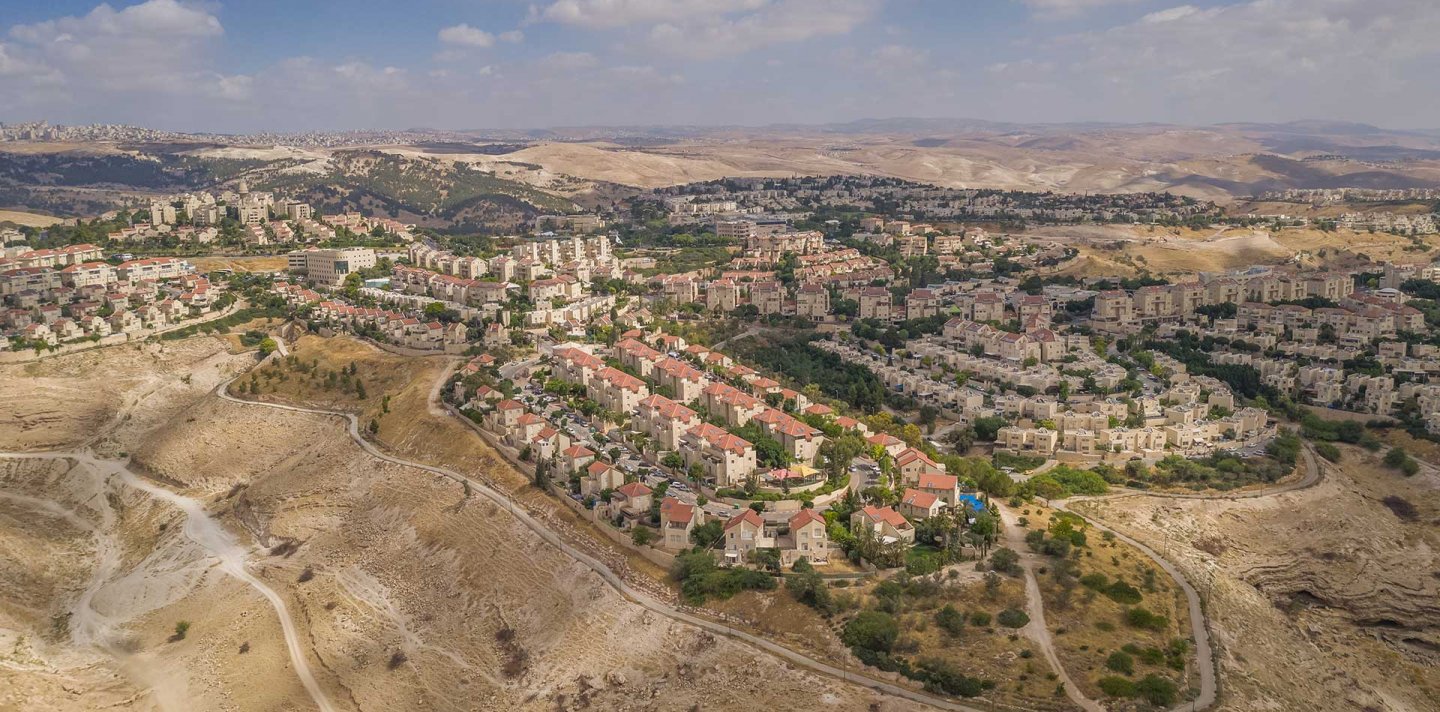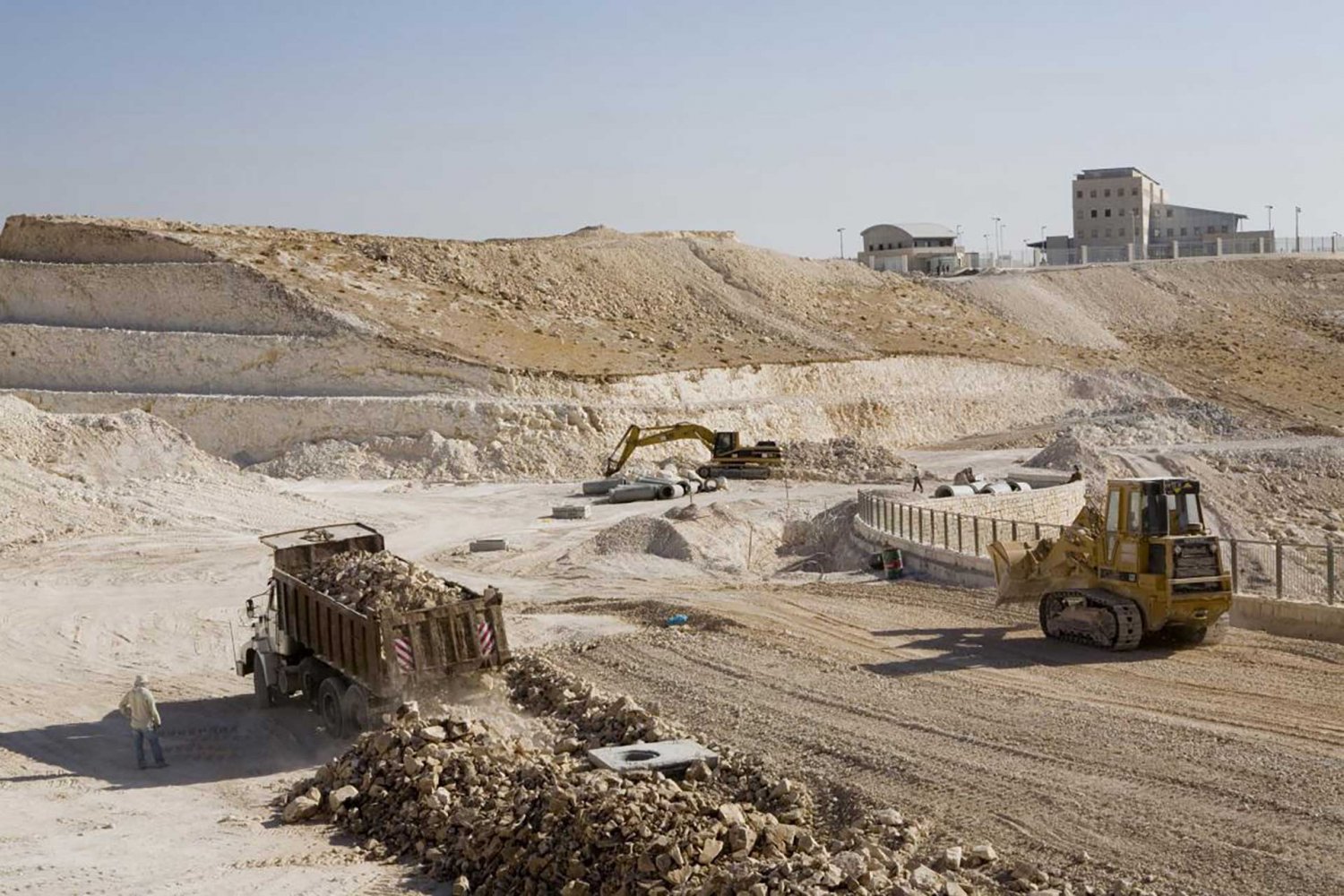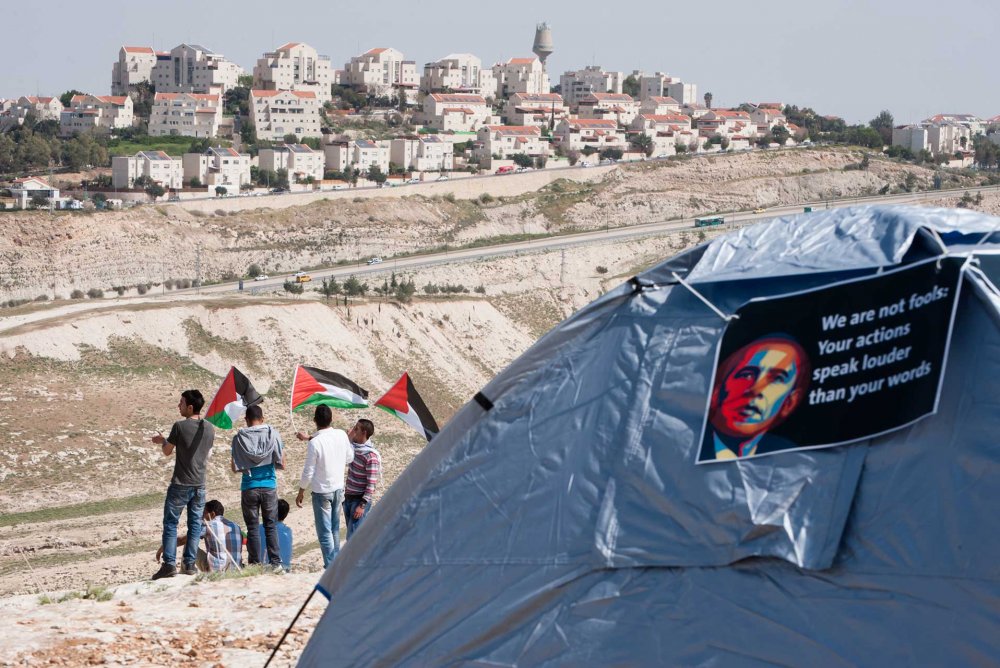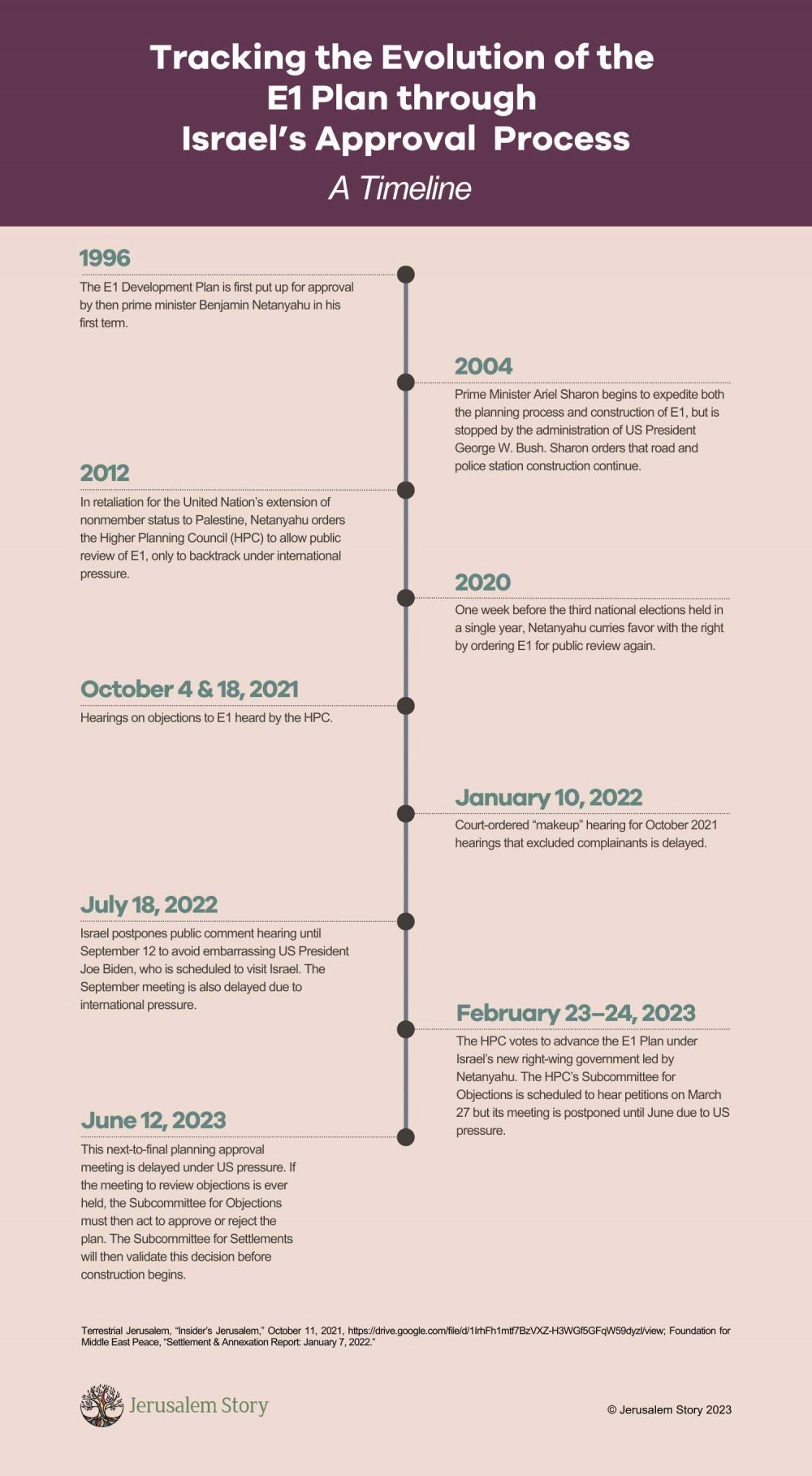Israeli Prime Minister Benjamin Netanyahu on June 9, 2023, ordered the postponement of a hearing that would have advanced one of the most consequential West Bank settlement plans—the E1 Development Plan. The decision was made after a call between Netanyahu and US Secretary of State Anthony Blinken, and US sources told the Times of Israel that the postponement is “indefinite.”1 History shows, however, that the E1 plan has been repeatedly delayed but never abandoned.
The E1 plan (short for “East 1,” the Israeli designation of the area just east of Jerusalem) encompasses nearly 3,500 Israeli settlement homes and creates a critical wedge between the northern and southern West Bank that would prevent the creation of a contiguous Palestinian state. The hearing for public objections on the E1 plan was initiated in February, just two months after the new far-right government was installed at the first meeting of the Civil Administration’s Higher Planning Council (HPC). This hearing, one of the final stages before plan approval, had been delayed in March to June 12, and is now again postponed—although no new meeting has been set.
While the E1 Development Plan has essentially been slow-walked since it was introduced in the 1990s during Netanyahu’s first term as prime minister, critical infrastructural work to lay the groundwork for the plan has already been completed. For example, the Civil Administration laid the groundwork for major highways such as 4370, the Eastern Ring Road, and completed construction on a major Israeli police station. According to Amos Harel of Haaretz, writing back in 2009, the Ma’ale Adumim police station served as a kind of pretext, “opening a window” for installing all kinds of preparatory infrastructure that lay claim to the area:




